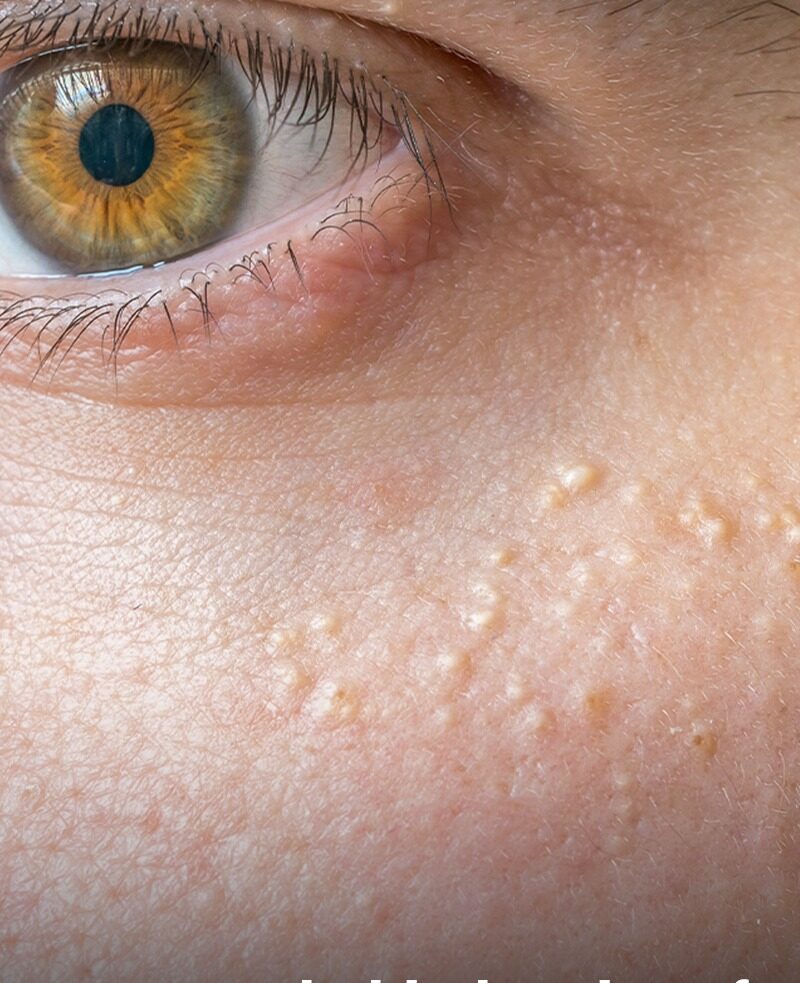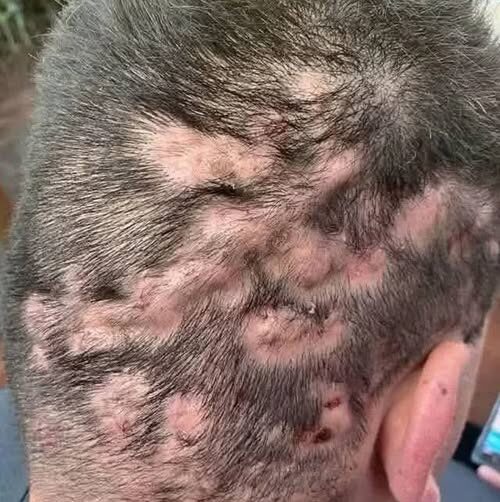Reason behind series of white spots on your body and private parts as experts issue serious warning
Experts have issued a warning about white spots which can appear on your face and genitals.
These spots are common and are generally normal, but can leave some people concerned when they appear.
They can occur as a result of build up of keratin or dead skin cells in the skin, effectively being a tiny cyst.
While they can appear at any time in your life, they become more noticeable during puberty as your skin can become oilier as your body changes.
But although they are generally common, health experts have issued a warning to anyone who notices them to prevent them from becoming something more serious.
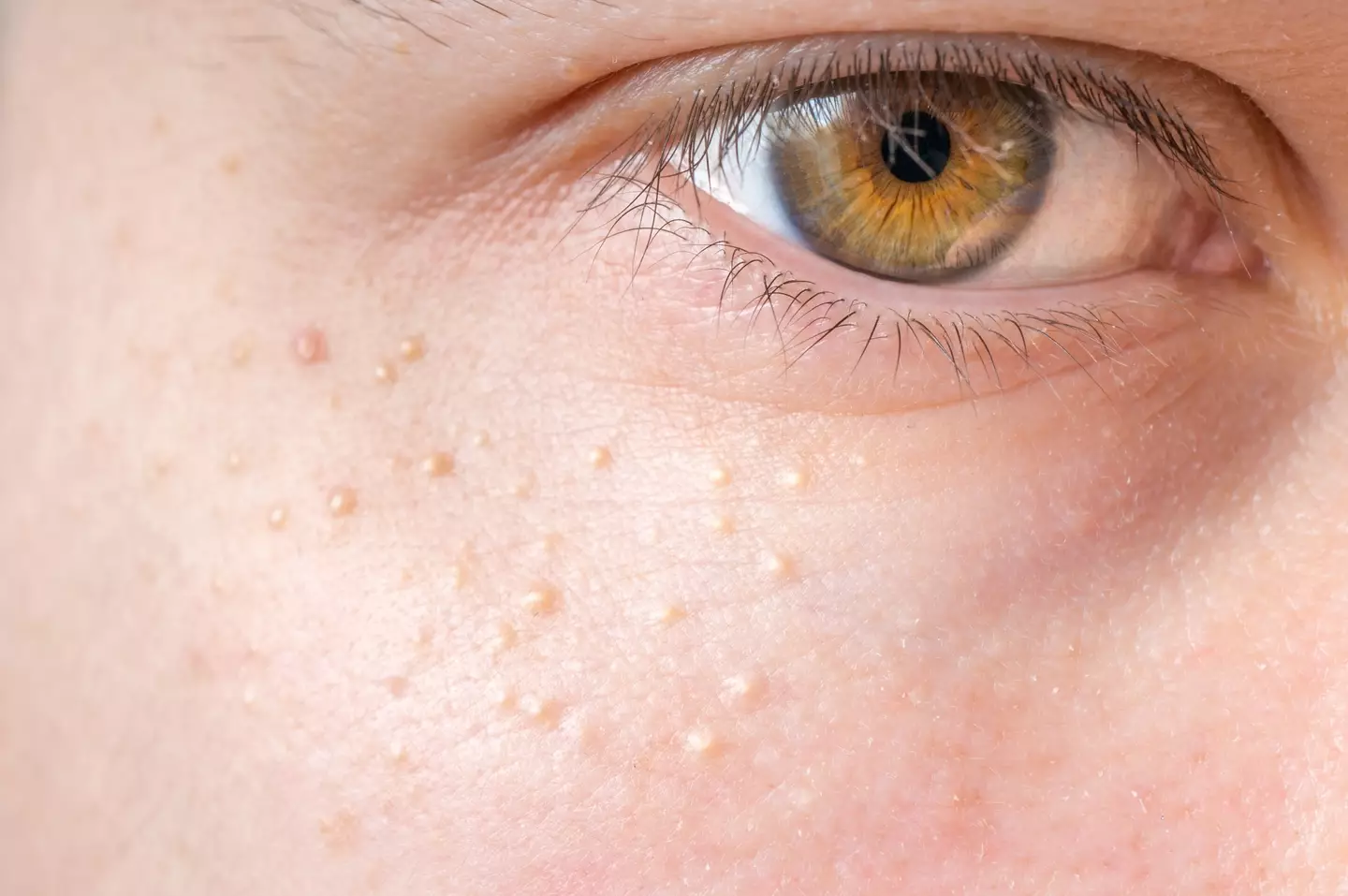
Milia are common but there is one thing you should keep in mine (vchal/Getty)
The spots are called milia, or milk spots.
Explaining what they are, Cleveland Clinic: “They become more noticeable during or after puberty.
“They often appear on and around your lips and sometimes on your penis and vagina. They’re a natural part of your skin, but treatments can shrink or remove them.”
And it’s also worth noting that the spots are different from acne or other skin conditions such as coldsores or genital herpes.
Dr Marnie Nussbaum, clinical instructor of dermatology at Weill Cornell Medical College, told Women’s Health: “Milia are tiny keratin-filled cysts on the surface of the skin.
“They are often confused with whiteheads or acne breakouts. However, these bumps are filled with hard balls of keratin, as opposed to liquid sebum and bacteria. And they cannot be extracted easily.”
Acne is different as this is caused when pores in the skin become blocked, with bacteria also sometimes infecting the area.
Meanwhile, herpes is another thing entirely being a viral infection transmitted by close physical contact, often during sex with an infected person, while coldsores are caused by the same kind of virus but are more commonly present on the face.
While milia are common, medics have issued one warning about the bumps and white spots.
This is to try and avoid picking at them or popping them, as it won’t make them go away.
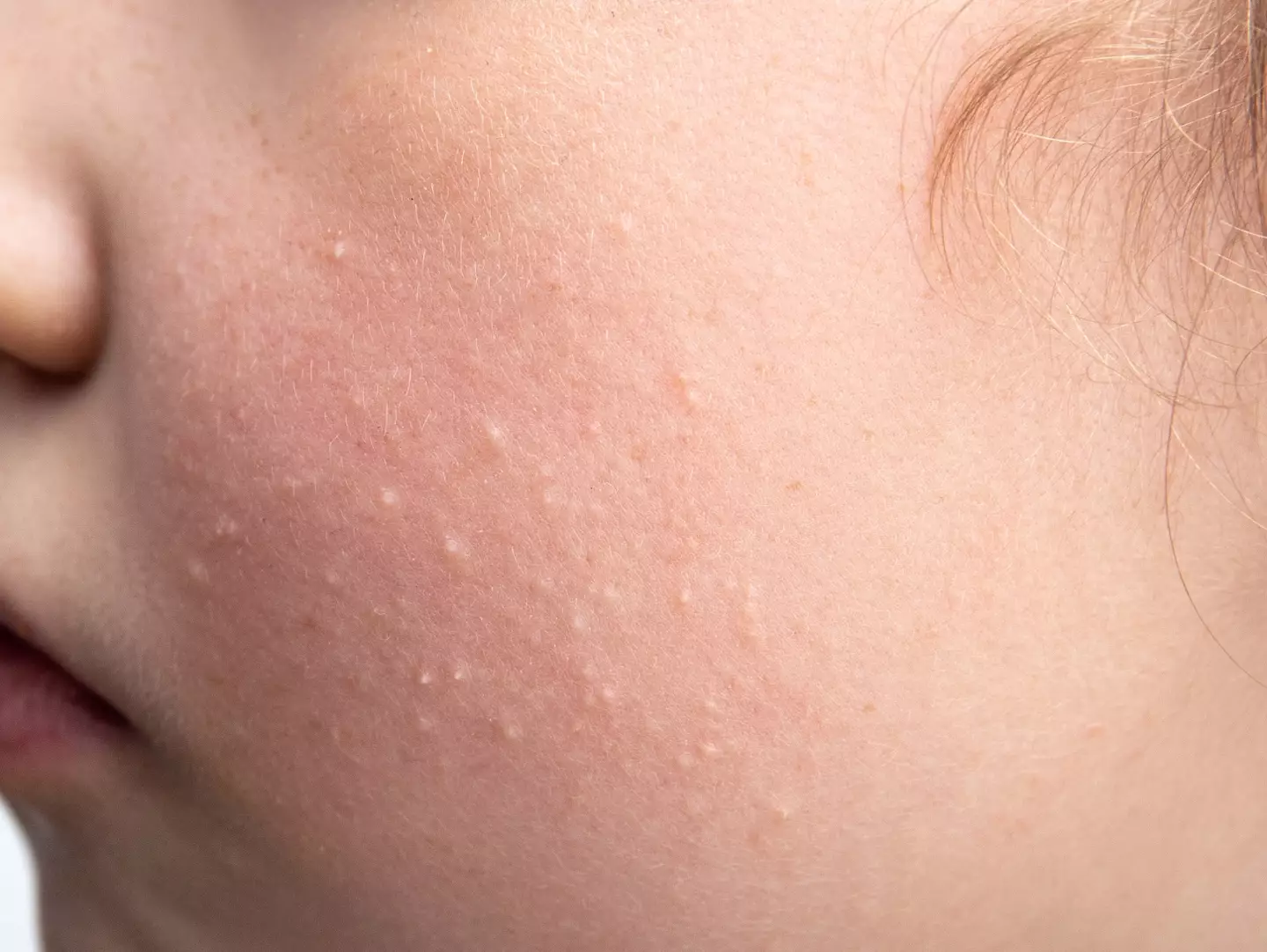
Doctors issued one bit of advice around them (Helin Loik-Tomson/Getty)
Not only that but if you do routinely pick at them this could spread an infection.
It might be tempting to try and make them go away, but getting an infection there could ultimately only make your symptoms even worse.
Healthline says: “Don’t pick or squeeze Fordyce spots. This won’t make them go away, and it can cause infections to develop.”
If you are really bothered by milia on your skin, there are treatments which can remove them.
And, of course, if something appears on your skin which you are not sure about you should speak to your doctor.
Featured Image Credit: Getty Stock Image
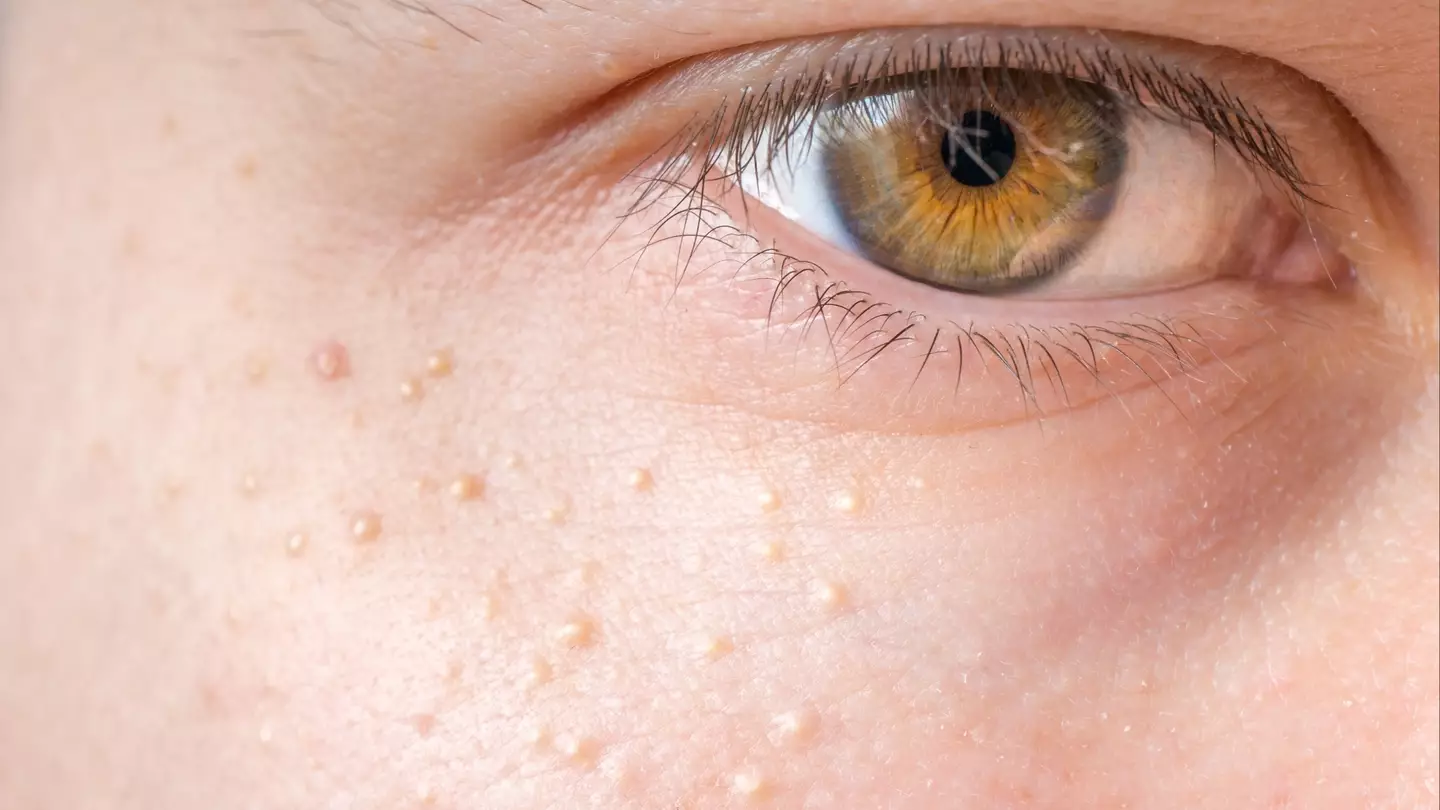
An expert has issued a warning to people who experience white spots on their body and genitals.
Many people experience tiny white spots on their face, which often appear on the delicate skin around the eyes, as well as on the nose and lips.
The spots are called milia – or sometimes referred to as milk spots – and are essentially tiny cysts that form due to a build-up of dead skin cells or keratin.
“Milia are tiny keratin-filled cysts on the surface of the skin,” Dr Marnie Nussbaum, clinical instructor of dermatology at Weill Cornell Medical College, told Women’s Health.
“They are often confused with whiteheads or acne breakouts. However, these bumps are filled with hard balls of keratin, as opposed to liquid sebum and bacteria. And they cannot be extracted easily.”

Many people experience white spots on their face and body (Getty Stock Image)
You might also have noticed similar white spots in your genital region, too.
These are often Fordyce spots, which appear as white or flesh-colored bumps on mucosal surfaces such as the lips and sometimes the genitals.
As per the Cleveland Clinic, the spots are ‘a common skin condition where oil glands appear larger’.
“They become more noticeable during or after puberty,” the website goes on. “They often appear on and around your lips and sometimes on your penis and vagina. They’re a natural part of your skin, but treatments can shrink or remove them.”
They’re not caused by anything, either. Typically, people are born with them, however, they might become more obvious when a person hits puberty.
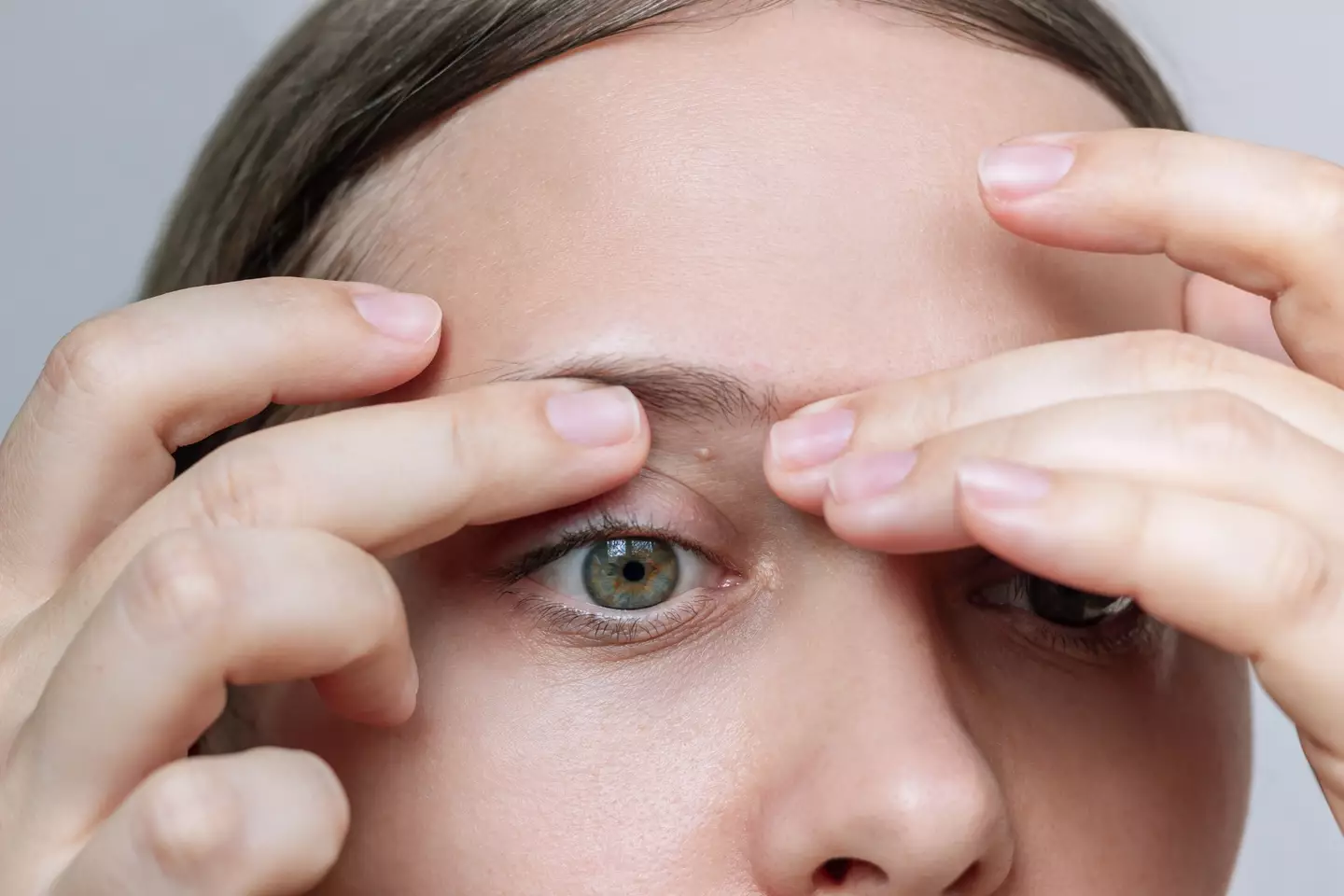
Experts have issued a warning about the spots (Getty Stock Image)
Whether you’re experiencing milia or Fordyce spots, there’s one resounding warning from experts – and that’s not to try and pop or pick them.
When it comes to milia, Dr Nussbaum warned that due to the layer of skin covering the bump, nothing will come out and trying to pop a milia carries a risk of scarring.
It’s a similar story with Fordyce spots, with Healthline warning not to pick or attempt to pop them.
“Don’t pick or squeeze Fordyce spots,” it explains. “This won’t make them go away, and it can cause infections to develop.”
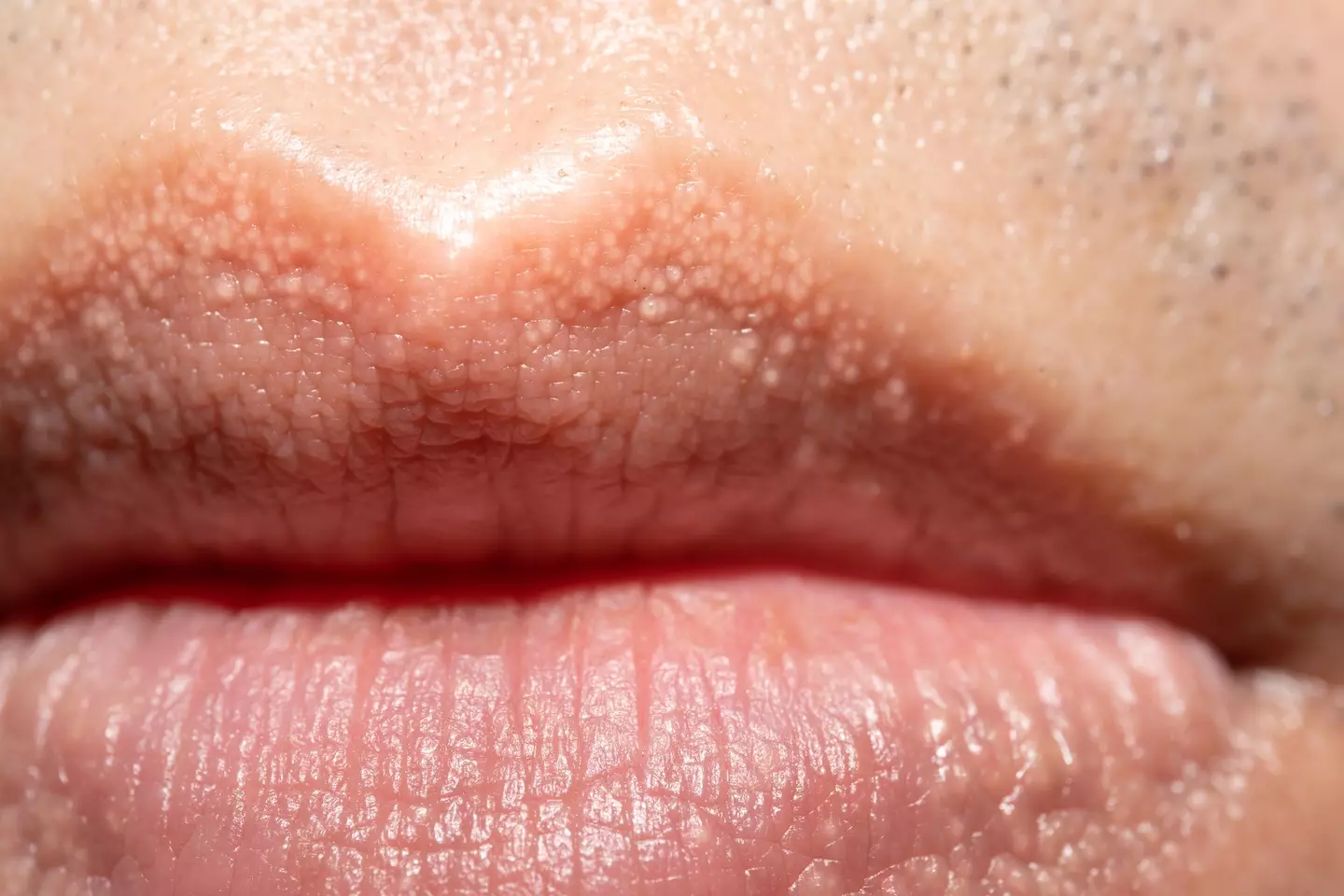
Fordyce spots can appear on the lips (Getty Stock Image)
Can you treat the white spots?
Fordyce spots usually sort themselves out, however, you can remove them via a variety of methods.
For example, topical creams, like retinoids, can be applied. The Cleveland Clinic also lists some more extreme procedures:
- Cryotherapy
- Electrodesiccation
- Laser skin resurfacing
- Micro-punch surgery
Milia can also be treated, with the Cleveland Clinic explaining that the following procedures can also be an option:
- Application of adapalene gel or tretinoin cream
- Surgically removing the milia
- Cryotherapy
- Using medicated creams
Featured Image Credit: Getty Stock Image

Have you ever noticed that you have unexplained white spots on your lips?
If you have, then you’re not alone as the little-known about condition is said to affect as many as 70 to 80 percent of adults.
As well as your lips, you might find that the bumps appear on your genitals too. But are these mysterious bumps, I heard you ask?
.jpg)
The spots are more common than you’d expect (Getty Stock Images)
What are Fordyce Spots?
They’re something called Fordyce Spots. As per Cleveland Clinic, the spots are ‘a common skin condition where oil glands appear larger’.
“They become more noticeable during or after puberty,” the website goes on. “They often appear on and around your lips and sometimes on your penis and vagina. They’re a natural part of your skin, but treatments can shrink or remove them.
They’re not caused by anything, either. Typically people are born with them, however, they might become more obvious when a person hits puberty.
Can you get rid of Fordyce Spots?
Fordyce spots usually sort themselves out, however, you can remove them via a variety of methods.
For example, topical creams, like retinoids, can be applied, however, Cleveland Clinic also lists some more extreme procedures:
- Cryotherapy
- Electrodesiccation
- Laser skin resurfacing
- Micro-punch surgery

Fordyce spots are not an STI, STD or cancerous (Getty Stock Images)
Are Fordyce Spots contagious?
In regards to getting such bumps on your genitals, it might cause you to think that they’re a cause of an STI or STD. But fear not folks, Fordyce Spots are not either of these things.
With this in mind, the bumps are not contagious the same way genital warts would be. The spots are also not cancerous.
“People with genital warts develop small bumps or growths in and around their genitals and rectum,” Cleveland Clinic explains. “Genital warts and HPV are both highly contagious.”
It goes on: “As genital warts initially develop, they may look like Fordyce spots. If you notice the sudden appearance of small bumps on your genitals, it’s a good idea to see a healthcare provider for a proper diagnosis.”
While you typically wouldn’t need to visit a doctor to diagnose Fordyce spots, if you notice bumps on your genitals, it is advised that you get yourself checked out so that a healthcare professional can rule out an STI or STDs.
It’s not uncommon for someone to be misdiagnosed with an STI, however — something which Halle Berry learnt for herself when she started experiencing pain during intercourse.
Featured Image Credit: Getty Stock Image

An expert has broken down what happens to your body when you fast.
Fasting is where someone goes a prolonged period without food or when someone eats a significantly lower amount of calories.
A popular type of fasting is the 5:2 Diet where someone eats normally five days a week, and on the other two days eats only 500-600 calories in a day non-consecutively.
There are several health benefits to fasting, weight loss being one. It can also help with blood sugar control, improve heart health, and physical performance, says Johns Hopkins Medicine.
However, some are divided on whether or not fasting is actually good for the body, citing a lack of human-backed studies on the practice.
But what actually happens to your body during the first stages of fasting? Dr Alan Goldhamer has explained.

A lot of people try fasting for its health benefits (Getty Stock Image)
Speaking to Steven Bartlett on his Diary of a CEO podcast, Goldhamer said that in the first 24 hours our bodies swap from using glucose as a fuel source to ketones (a type of chemical that your liver produces when it breaks down fats).
“[In the first 24-48 hours of fasting] it’s going to predominately shift the brain liver muscles are going to begin shifting – it’s a progression depending on your glycogen stores,” he explained.
“Within 16 hours/24 hours/48 hours in that transition, you’ll be going from burning almost exclusively glucose to burning byproducts of fact metabolism.”
These byproducts are things like ketones and beta hydroxybutyric acid (BHB). BHB is a chemical that provides energy when not enough carbohydrates or sugars have been eaten.
As well as helping you lose weight, it’s believed that fasting can prove beneficial for brain health as well.
Goldhamer told Bartlett: “The higher your [BHB] is, the more BDNF is produced. BDNF, brain-derived neurotrophic factor, is a neurochemical that’s thought to be protective in the brain from oxidative damage.”
Oxidative damage can lead to things like Alzheimer’s disease and Parkinson’s.
There have been simulations which show what happens to the body when you fast.
In a more specific breakdown, one video shows that within the first four hours of you fasting your body will stop digesting food.
Come eight hours without food your blood sugar will drop and your body begins to use stored glycogen for energy instead.
By 12 hours your body will probably be depleted of glucose and your liver to start breaking down fat into ketones.
Then, by 16 hours of fasting, you’ll start experiencing something known as autophagy, which is the body’s natural process of breaking down and recycling damaged or unnecessary components within its cells.
As always, it’s worth checking with a medical professional before making any major changes to your diet.
Featured Image Credit: YouTube/The Diary of a CEO

We all need our beauty sleep, and by now, we know just how much is required to keep us ticking.
Personally, if I don’t get eight hours of sleep, I feel groggy – although that consists of waking several times in the night to look after my son.
Anyway, experts have revealed what can happen to your body if you don’t get seven hours of sleep.
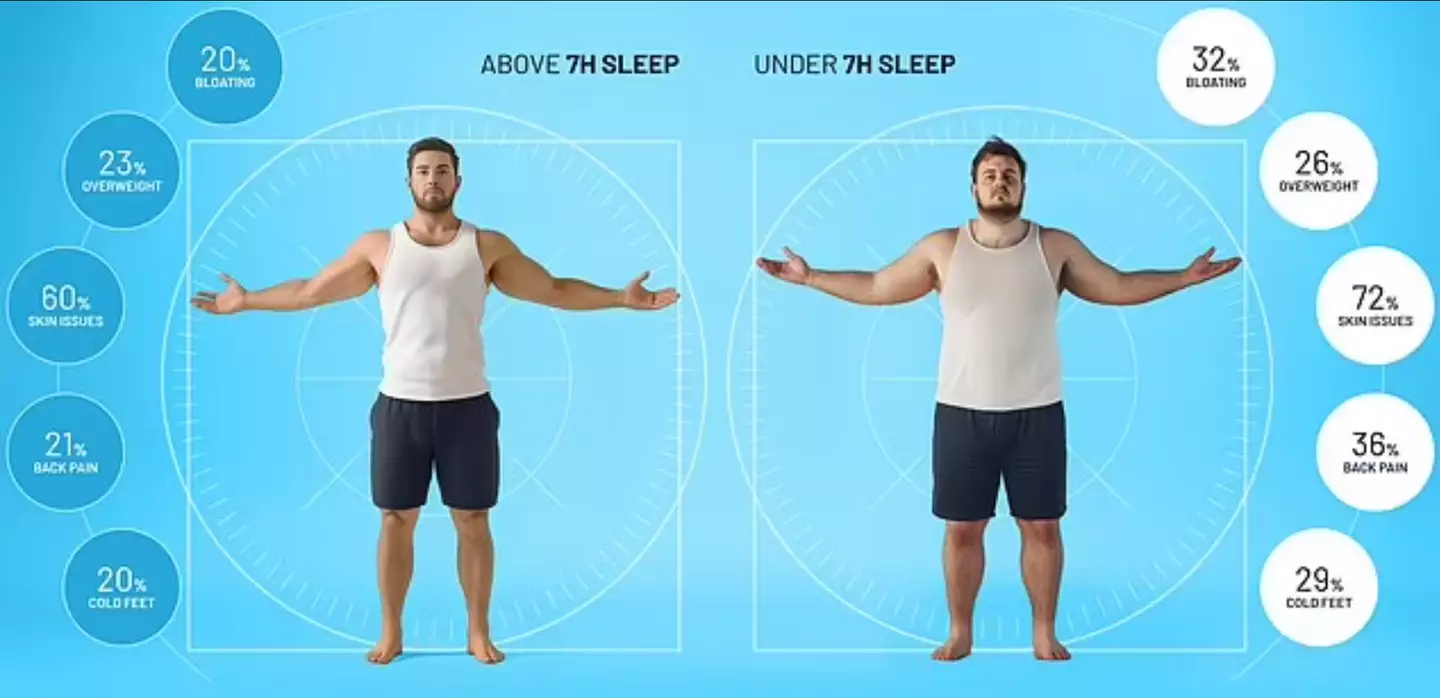
Simba utilised advanced generative AI to create sleep avatars, demonstrating the effects of sleep on weight, bloating and posture, based on data from 2,175 UK study participants (Simba)
A survey of 2,175 adult Brits from UK-based mattress group Simba Sleep has revealed the extent of participants’ sleeping habits, as well as their physical health and appearance.
The sleep tech firm then used advanced generative AI to create sleep avatars, demonstrating the effects of sleep on weight, bloating, and posture, based on the data – and the images are shocking.
It has detailed how sleep deprivation can lead to blotchy skin and bloating. Deputy CEO of The Sleep Charity, a nonprofit partner of Simba, Lisa Artis said: “A lack of sleep doesn’t just leave you tired – it shows up all over your body.
“When sleep is compromised reduced blood flow causes the skin to appear sallow and lack vibrancy, stripping it of its natural glow and vitality.
Data provided from the sleep tech firm shows how restlessness can lead to weight-gain (Simba)
“Additionally, when you’re sleep-deprived, cortisol levels – the stress hormone – rise, exacerbating inflammatory skin conditions, worsening conditions like eczema and psoriasis, leading to irritation, redness, and itching.”
The answers from the survey were they used to show what the body looks like when you get seven or more hours sleep compared to less than seven.
Participants that recorded less than an average of seven hours sleep complained of having sensitive skin – 24 percent, while 16 percent stated that they had eczema, with 15 percent having experienced brittle fingernails, 10 percent had a dull skin tone, while seven percent recorded psoriasis.
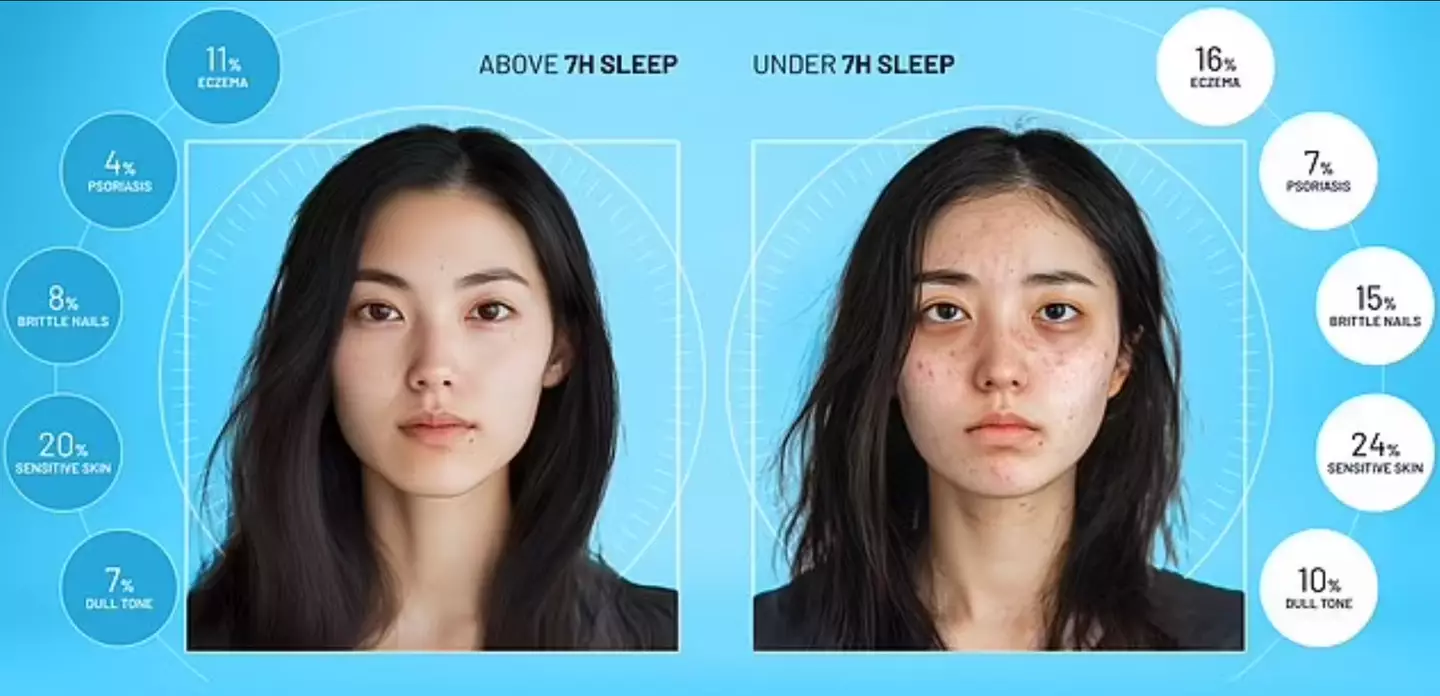
Sleeplessness can lead to a series of skin symptoms appearing (Simba)
There’s a reason why sleep-deprived people may show common skin symptoms – that’s because at night, our body clicks into overtime to ‘regenerate and repair itself’, Artis explained.
“During rest, blood flow increases, supporting its natural repair processes and promoting a healthy, radiant complexion,” she added.
Long periods of restlessness, known as insomnia, can also increase the chances of you putting a weight on.
According to Michelle Drerup, of the Cleveland Clinic, ‘most healthy people need seven to eight and a half hours’.
The US Centers for Disease Control and Prevention state that teenagers between the ages of 13 and 17 need eight to ten hours sleep.
